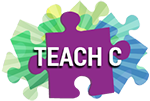Device Interfaces
| Device | Description | Resources |
|---|---|---|
| GPS | Global Positioning System |
|
| LCD |
The basic LCD module has discreet segments that can be lit. Sometimes all the segments go to the processor and sometimes they are multiplexed. In addition to numbers and letters specific icons or simple shapes can be used.
The character LCD uses dots to make up numbers and letters and some symbols. These are smart displays that frequently use a 7 or 11 wire parallel interface. Graphics LCD units have a screen full of dots and requires more firmware effort to display something meaningful. |
|
| Segmented LED |
7 segment LEDs are used to display numbers by lighting specific segments. 14 and 16 segment displays can be used for alpha-numeric displays.
|
|
| RFID |
A very short range wireless protocol that can be used with un-powered slave devices. The power is extracted from the RF signal of the reader. Intended as a replacement for optical bar codes there are also bi-directional versions of RFID. Used for building keycards, animal tracking, shipping containers and automated toll booths.
|
|
| Keypad |
There are chips to scan column/row keypads however almost always this is done by an algorithm in the PIC® MCU.
|
|
| iButton |
Introduced by Dallas semiconductor (now Maxim Integrated) a simple 1-wire interface is used to transfer small amounts of data. Used for touch ID badges and shipping containers.
|
|
| Touch Screen |
Two analog voltages to indicate where the finger is on the screen. Many chips available to decode the voltages and give SPI or I2C data to the processor.
|
|
| Stepper Motors |
Stepper motors have multiple coils and the firmware will engage the coils in a specific sequence to control the distance the motor moves, the speed and the direction. Usually a fancy PWM is used that has multiple outputs.
|
|
| DC Motors |
Most DC motors are controlled by controlling the voltage. The higher voltage the faster it turns. Some kind of feedback like an optical encoder can be used to set a specific speed. The voltage control is frequently done using a PWM output from the PIC® MCU and a duty cycle to voltage converter in hardware.
|
|
| Credit Card Reader |
The readers output something like a SPI signal with some additional lines to indicate what is going on. Some units output a TTL or RS-232 level asynchronous data stream.
|
|
| CODEC (audio) |
Audio processing chips use a SPI interface usually at a high speed making the PIC24 or dsPIC® the most effective processor. Data can be buffered up using the DMA options or an interrupt and handle and process each sample. Sample rates are typically 8K to 50K.
|
|
| PC Keyboard |
The old style keyboards use asynchronous serial (TTL RS-232) to send the data. Newer keyboards use USB. The example here shows how to emulate a keyboard from a PIC® MCU. This means you could have a button press that sends a text string, or you could do some kind of data collection.
|
|
| PC Mouse |
Like the PC Keyboard above this is a mouse.
|
|
| Smartphone |
A free generic app can be used on a smart device to communicate via Bluetooth® wireless technology to a PIC® MCU device.
|
|




